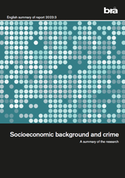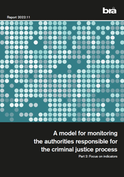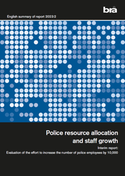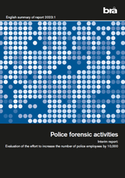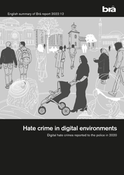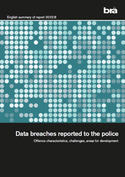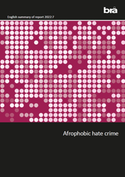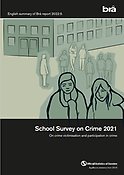Hate crimes reported to the police in 2020
A compilation of the cases that were classified as hate crimes by the police. English summary of Brå report 2021:17
This report presents Brå’s statistics on offences reported to the police in 2020 where hate was the underlying motive. The statistics are based on reported crimes that the police classified as hate crimes and where Brå identified hate as the underlying motive.
The report is a descriptive compilation and comprises an investigation of the police’s hate crime classification, and an account of the hate crime motives Brå identified, as well as crime categories, type of crime scene, and the victim’s gender and relationship to the perpetrator. In addition to this, statistics were also reported on the regional distribution of the reported offences, i.e., divided across the police regions where they were registered, and statistics on the distribution of hate crimes per municipality, based on where the offences took place.
Hate crimes
Related content
Summary
At an overall level, xenophobic and racist hate crimes (55 percent) were the most common among the reported hate crimes in 2020, followed by hate crimes against religious groups (17 percent) and LGBTQI-related hate crimes (13 percent). In addition, 15 percent of the reported hate crimes were judged to be unspecified hate crimes. In these reports, it would appear that a hate crime had been committed, but it was not possible to deduce the specific motive behind the reported offence.
In most types of hate crimes, the most common crime category was harassment, which accounted for a total of 25 percent of all reported hate crimes in 2020. After harassment, agitation against an ethnic or national group (23 percent) was most common among all reported offences, followed by unlawful threats (15 percent).
The most common crime scene in the police reports was a public place (20 percent), followed by the victim’s home, or in close proximity to it (19 percent), and at the victim’s place of work (11 percent). Hate crimes in digital environments were also common; chat, text message and phone (9 percent), social media (6 percent) and other online forums (2 percent) accounted for a total of 17 percent of the reported hate crimes. Another 10 percent of the offences took place in a school environment (physical or digital).
The victim was male in 38 percent of the reports and female in 27 percent. In 28 percent of the reports, no crime was committed against a natural person.
These reports largely related to crimes such as graffiti, malicious damage, and agitation against an ethnic or national group.
In 32 percent of the reports, the perpetrator was a person who was not known to the victim. It was also common for the relationship to be judged as being irrelevant (26 percent), which means that there was no relevant relationship between the victim and the perpetrator. This was usually due to the fact that the hate crime was not directed at a specific person, group, or activity. In 10 percent of the police reports, the perpetrator was a neighbour of the victim and in 8 percent a person who the victim knew by name or appearance. Relatively few of the reported hate crimes were committed by a school friend (3 percent), colleague (1 percent), friend/acquaintance (2 percent), relative (2 percent) or former partner (1 percent) of the victim.
Changes in Brå’s statistics on hate crimes reported to the police
LAs of 2020, Brå’s statistics of offences reported to the police where hate was identified as the motive, constitute a comprehensive investigation of all police reports that the police classified as hate crimes. The statistics are based on a different data selection than Brå’s previous hate crime statistics, which means that the statistics in this report are not comparable with Brå’s previous hate crime statistics.1 It is important to note that the consistently lower levels of crime with hate as the underlying motive included in this report do not mean that there has been an actual reduction in the number of reported hate crimes, but that this is a consequence of a change in the selection of reports reviewed by Brå.
The changes to the selection and the method were carried out to increase the relevance of the statistics. The new statistics can be used as a more relevant basis for following up administrative decisions on reported crimes with hate as the underlying motive. The changes also make it possible to use hate crime statistics as a tool for following up operations, such as evaluating the police’s initial handling of reported offences classified as hate crimes. The statistics thus become more relevant to the police’s operational activities.
Publication facts
Author: Ludvig Stendahl and Sofia Axell
© Brottsförebyggande rådet 2024
urn:nbn:se:bra-1022
Report 2021:17


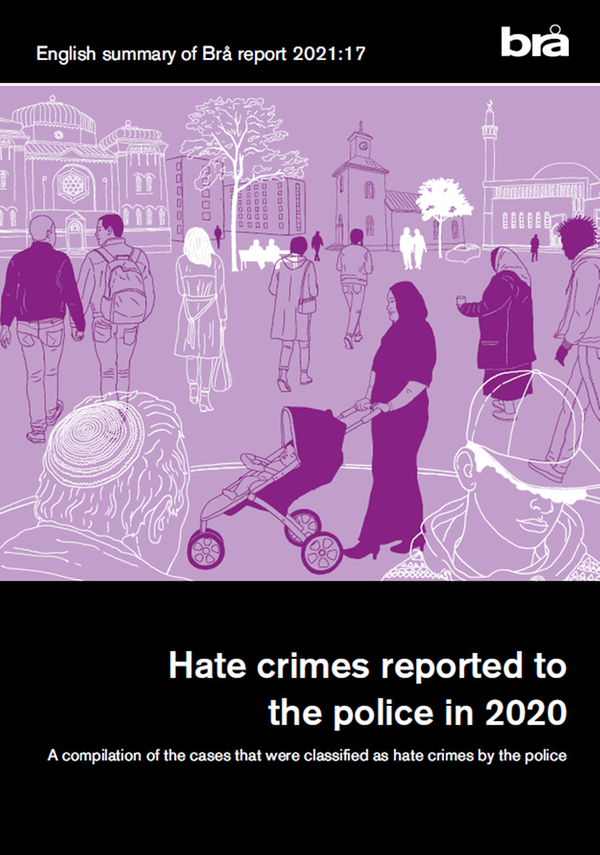
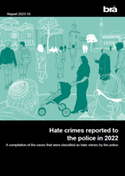
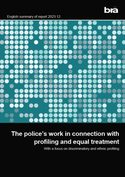
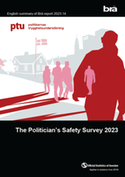
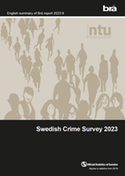
%202023_11_Fraud.png)
